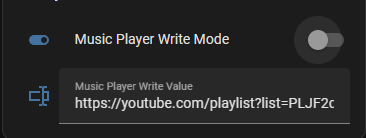Evaluating Art, Algorithm Generated Images, and Intentions
With the rise of AI art, it's incredibly easy for everyone to produce “art”. A Ghibli-style illustration, an oil painting-like rendition of your favorite photo. They say they democratized art, making it accessible to the masses. Bullshit. TL,DR: It's slop
I've been asking this whenever I find someone that praises these algorithm generated images. Here's an example of the general flow of the conversation:
- A: “Look at this Ghibli art I made out of a prompt”
- Me: “Why do you think it looks good?”
- A: “Well... it's just is! don't you think it looks good? it looks like Ghibli made it!”
- Me: “Why do you think Ghibli illustration looks good?”
- A: “The colors... the simpleness... how the people are drawn? I think they look good?”
- Me: “Why do you think that combination of color and art style looks good?”
- A: “I don't really know they just looks good to me”
Do you see the difference? For me I think it's the superficiality of it, it's surface level appreciation, it's just what they think “art” should look like so they mimic it. They don't know what is the purpose of it.
Let's step away from illustration – there's an argument to be made that they are laborious while algorithm generated images are easy – let's talk about something simpler. Photographs.
They have democratized photography since the invention of the first phone. Everyone nowadays have a small camera they can use to take picture. But as you might have known, certain images belongs to be purged every time you ran out of storage, while others are to be shared, to be put in competitions, to be paid for. What's the difference between those?
A good photograph has Intentions. A professional photograph are full of intention, the white balance to portray the scene, the composition to decide where your eyes are drawn, the story that you want to tell about the picture, what you want the audience to feel when they see the picture.
Even a dinky photograph taken from a 3DS camera can be a good photograph when it has intentions. Remember all of those photograph of you and your friend on your first trip together? They're blurry, they're a mess, it's too dark sometime, your faces are overblown with the light and the overcompensation. But they are good photographs, because you can feel the intention behind it. They're there as a reminder of the good times you have with each other. The audience intended is your friends that came with you on the trip, and you took those picture with them in mind. It doesn't really matter what others thought.
Algorithm Generated Images, especially those exist to mimic other art styles, miss this point. Each stroke, each shape of an illustration are drawn in that way with intention. They designed the animation to portray a certain feeling. The only intention that exists in an algorithm created imagery is the surface level detail from the prompt. That's why when you look at the details, it broke down.
At the end of the day, I hope my takeaway from this mini rant is that to create any art you don't need any algorithm or AI, all you need is a medium, and intention.



